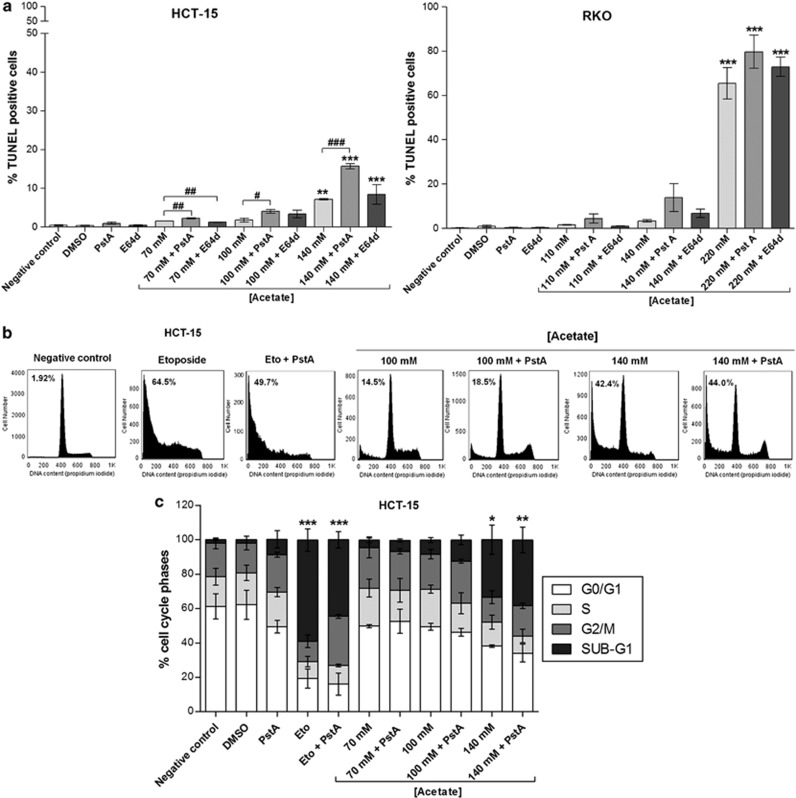Figure 5.
CatD has a protective role in acetate-induced apoptosis. Effect of the specific CatD inhibitor (PstA) and CatB and CatL inhibitor (E64d) on apoptosis in HCT-15 and RKO cells treated with acetate. PstA (100 μM) was pre-incubated for 16 h and then co-incubated with acetate for 48 h. E64d (10 μM) was pre-incubated for 1 h and then co-incubated with acetate for 48 h. (a) Apoptosis analysis by TUNEL assay. Values represent mean±S.E.M. of at least three independent experiments. **P≤0.01; ***P≤0.001 compared with negative control cells. # P≤0.05; ## P≤0.01; ### P≤0.001 comparing acetate treatment with or without PstA or E64d. (b) Analysis of the effect PstA on the sub-G1 subpopulation of acetate-treated HCT-15 cells by flow cytometry. Representative histograms corresponding to HCT-15 cells treated with 100 mM and 140 mM acetate with or without PstA. Percentage of sub-G1 cells are shown. Cells were incubated with fresh complete medium or etoposide (50 μM) as a negative and positive control, respectively. (c) Analysis of the distribution of cell-cycle phases in HCT-15 cells after acetate treatment in absence/presence of PstA. Values represent mean±S.E.M. of at least three independent experiments. *P≤0.05; **P≤0.01; ***P≤0.001 comparing the percentage of sub-G1 populations of treated cells with that of untreated cells (negative control/dimethyl sulfoxide (DMSO))

